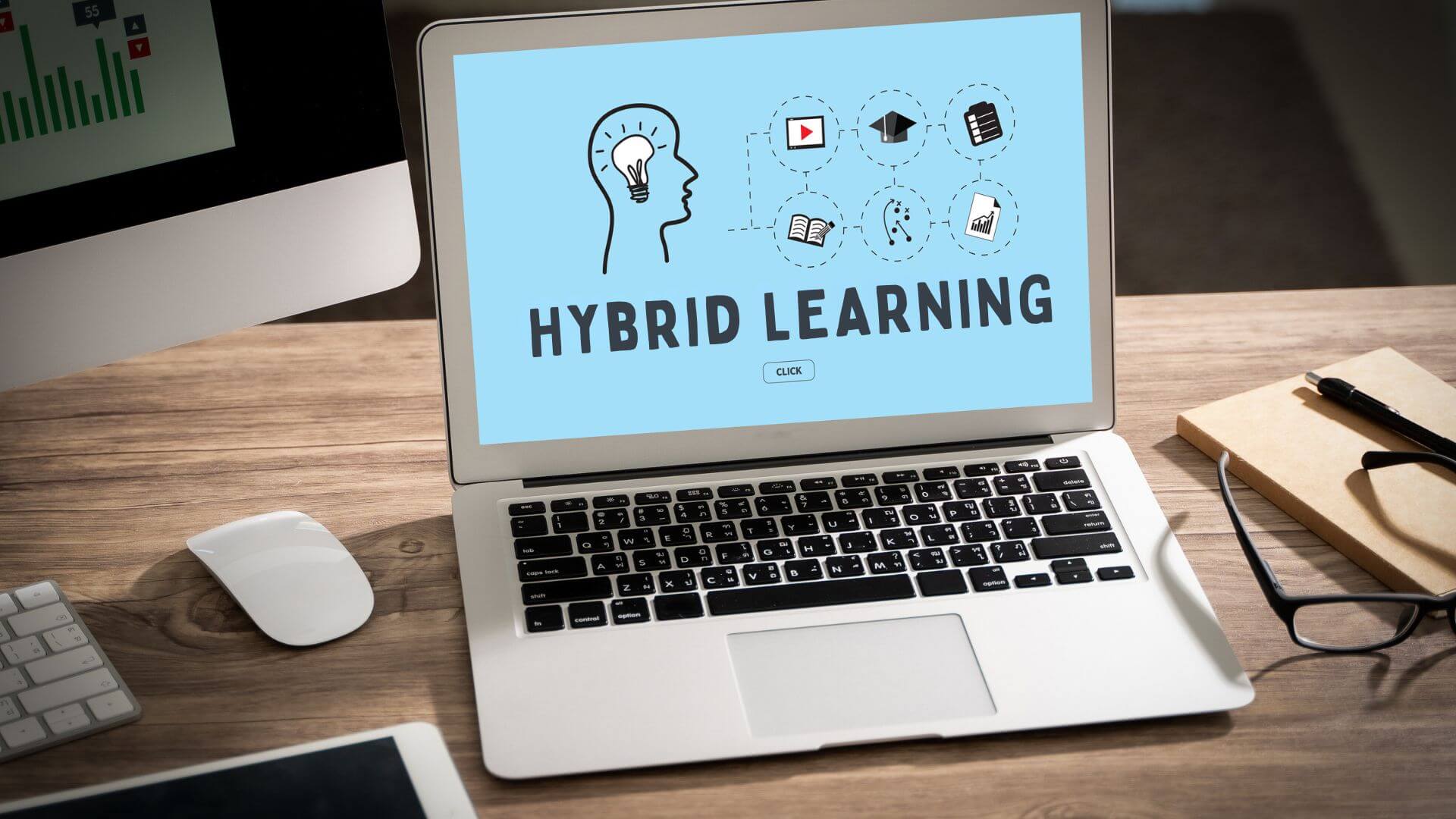The age of one-size-fits-all classrooms is behind us. Enter hybrid learning models, where the best of two worlds—physical and digital—merge into an extraordinary learning experience. Hybrid learning is not merely a buzzword or a fleeting trend it’s a revolution reshaping how we think about education. It transcends traditional boundaries, inviting students and educators alike into a realm of personalized discovery, unmatched flexibility and infinite potential.
What Makes Hybrid Learning So Different?
At its heart, hybrid learning is a carefully orchestrated blend of in-person and online instruction. But this isn’t about arbitrarily splitting time between classrooms and computers. It’s about creating synergy.
In a hybrid model, physical spaces come alive with hands-on collaboration, while online platforms unlock self-paced exploration. Imagine a science class where students perform experiments in labs but analyze data using cutting-edge virtual tools or an English course where face-to-face debates are enriched with online forums connecting students globally.
Its education is reimagined—not for convenience but for transformation.
Unleashing the Power of Hybrid Learning
Hybrid learning isn’t just practical it’s transformative, built on principles that drive real impact –
1. Flexibility That Empowers
Gone are rigid timetables. Students now learn when and where they feel most inspired. This is a boon for working professionals, athletes or anyone juggling multiple responsibilities. It’s the model that doesn’t ask students to fit into education—it reshapes education to fit them.
2. Immersive Engagement
Through virtual reality (VR), augmented reality (AR) and interactive online modules, hybrid learning makes subjects come alive. A history lesson transforms into a virtual journey to ancient Rome, while math problems are solved collaboratively in gamified online competitions.
3. Learning Without Limits
Hybrid models dismantle traditional barriers. Remote students connect with global classrooms, creating a melting pot of ideas. A child in rural Kansas can collaborate with a student in Tokyo, all from the comfort of their home.
4. Future-Ready Skills
Hybrid learning doesn’t just teach subjects it teaches adaptability. Students develop tech fluency, time management and self-motivation—skills that are invaluable in a rapidly evolving workforce.

The Challenges—and How Hybrid Learning Rises Above
Innovation comes with hurdles. A hybrid learning journey is no different, but it’s the solutions that prove its resilience –
• Digital Divide – Not everyone has equal access to technology. Institutions are bridging this gap with free devices, subsidized internet and community tech hubs.
• Teacher Readiness – Teachers need training to shine in hybrid environments. Interactive workshops, mentorships and peer networks are transforming educators into digital trailblazers.
• Student Motivation – Engaging students across virtual platforms requires creativity. Gamification, interactive tools and frequent teacher check-ins make the digital world exciting, not isolating.
Hybrid learning isn’t ignoring these challenges it’s meeting them head-on with innovation.
The Technology Behind the Magic
Hybrid learning is powered by cutting-edge tools that elevate education –
• AI-Powered Platforms—Tools like adaptive learning systems analyze student progress in real time, offering personalized suggestions to help learners thrive.
• VR and AR – These technologies turn imagination into reality. Virtual labs, field trips and immersive simulations make concepts unforgettable.
• Learning Management Systems (LMS) – Platforms like Google Classroom and Canvas provide a seamless hub for organizing materials, tracking assignments and fostering collaboration.
These aren’t just tools they’re the architects of a new education reality.
Real Stories of Hybrid Learning in Action
From Rural to Global
In a small town in Montana, a hybrid learning initiative connected high school students to a robotics workshop led by experts in Germany. They designed and built robots collaboratively, bridging thousands of miles with just a screen and shared curiosity.
A Universitys Renaissance
At a renowned U.S. university, hybrid classes have turned lecture halls into collaborative studios. Professors use AI to identify struggling students early, offering tailored support that ensures no one gets left behind.
Corporate Training Revolution
Hybrid learning isn’t limited to classrooms. Companies like IBM use it to train employees globally, combining in-person workshops with self-paced modules, leading to higher productivity and employee satisfaction.
The Future Is Hybrid
Hybrid learning isn’t static it’s evolving. Imagine a future where –
• Global Classrooms Flourish – A student in Kenya can debate climate policy with peers in Brazil, all facilitated by AI-driven translation tools.
• VR Universes Become the Norm – Medical students practice surgeries in virtual operating rooms, gaining experience without risk.
• Data Drives Success – Real-time analytics pinpoint gaps in understanding, allowing teachers to adapt lessons instantly for maximum impact.

Why Hybrid Learning Matters Now
We’re living in a time when education must keep pace with a fast-changing world. Traditional methods, while valuable, can’t address the diversity of today’s learners or the complexity of tomorrow’s challenges.
Hybrid learning doesn’t just meet these demands—it exceeds them. It’s not about incremental change it’s about a bold leap forward, ensuring every student has the chance to learn, grow and succeed on their terms.
In the words of futurist Alvin Toffler –
The illiterate of the 21st century will not be those who cannot read and write but those who cannot learn, unlearn and relearn. Hybrid learning embodies this ethos, creating a generation that’s not just educated but empowered.
Final Thoughts
Hybrid learning models are not the education of the future but the education of the now. By embracing technology, fostering inclusivity and inspiring curiosity, these models are redefining what’s possible in learning.
Whether you’re a student, educator or policymaker, the message is clear – The future of education isn’t confined to walls or screens. It’s hybrid and it’s limitless.



























